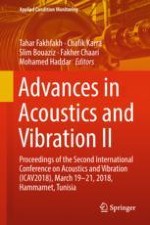The book provides readers with a snapshot of recent research and industrial trends in field of industrial acoustics and vibration. Each chapter, accepted after a rigorous peer-review process, reports on a selected, original piece of work presented and discussed at the Second International Conference on Acoustics and Vibration (ICAV2018), which was organized by the Tunisian Association of Industrial Acoustics and Vibration (ATAVI) and held March 19-21, in Hammamet, Tunisia. The contributions cover advances in both theory and practice in a variety of subfields, such as: smart materials and structures; fluid-structure interaction; structural acoustics as well as computational vibro-acoustics and numerical methods. Further topics include: engines control, noise identification, robust design, flow-induced vibration and many others. This book provides a valuable resource for both academics and professionals dealing with diverse issues in applied mechanics. By combining advanced theories with industrial issues, it is expected to facilitate communication and collaboration between different groups of researchers and technology users.
